8 Species of Woodpeckers in Connecticut (With Pictures)
Last Updated on
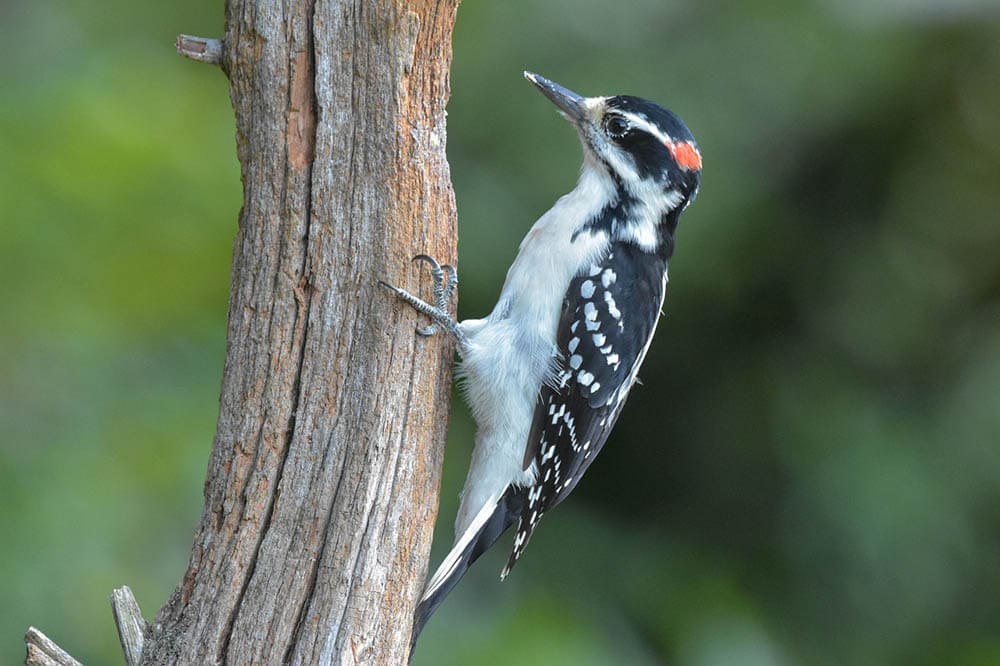
Home to hundreds of different species of bird, Connecticut is also home to seven native species of Woodpecker, and there is the chance of seeing another, the Black-Backed Woodpecker, as it crosses state lines.
Woodpeckers are popular because of their attractive markings and their incredible drilling noise and pecking action. They also serve a vital role in local ecology. They control insect populations, and the cavities that they create in trees are used by birds like nuthatches and screech owls, as well as flying squirrels and raccoons, as nests.
Below are details of the seven native species of Woodpecker that can be spotted in Connecticut, as well as one species that makes the occasional visit.

The 8 Species of Woodpeckers in Connecticut (With Pictures)
1. Downy Woodpecker

| Size: | 7 inches |
| Weight: | 1 ounce |
The Downy Woodpecker lives in Connecticut throughout the year, which means that it is possible to spot them at any time. They are easier to spot during the summer months, however. Residing typically in the tops of deadwood trees, they can also be found in parks and in some rural areas.
The Downy Woodpecker is a small woodpecker that is black and white in color. The male can have a small red patch at the back of its head, although this isn’t always the case.
2. Hairy Woodpecker
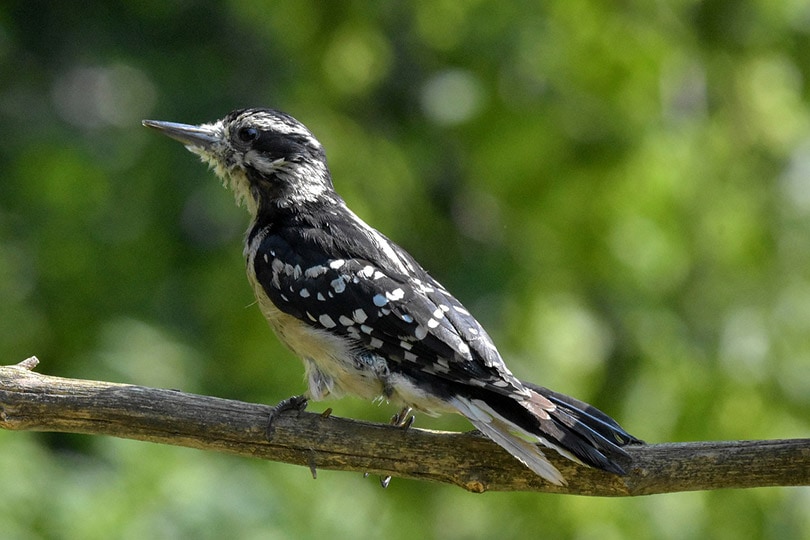
| Size: | 10 inches |
| Weight: | 3 ounces |
The Hairy Woodpecker is similar in appearance to the Downy Woodpecker but tends to be much larger. Like the Downy Woodpecker, the male Hairy Woodpecker may have a red mark on the back of its neck or head.
This is another species that spends the whole year in Connecticut. It feeds on insects and lives high in deadwood trees. The Hairy Woodpecker is more widely distributed across the US than any other species of woodpecker but is still a worthy spot for keen observers.
3. Northern Flicker

| Size: | 12 inches |
| Weight: | 5 ounces |
Another woodpecker that is distributed across the US is the Northern Flicker. Although there are two distinct subspecies of Northern Flicker in the US, it is the Yellow-Shafted Flicker that resides in Connecticut and other parts of the Eastern United States. It is a black and white bird, but the underside of its wings are yellow, and so too is the underneath of its tail, which makes recognition easiest when it is flying.
The Flicker lives next to woodlands and eats a diet consisting of insects, seeds, and berries.
4. Pileated Woodpecker
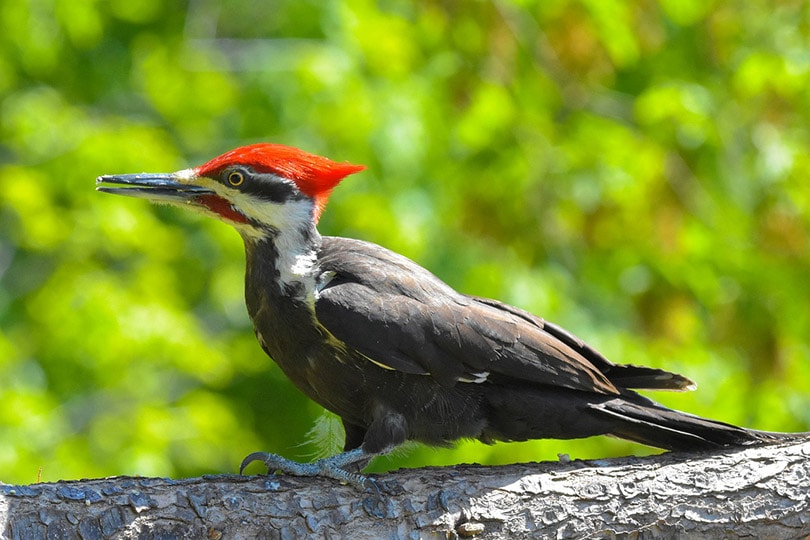
| Size: | 18 inches |
| Weight: | 12 ounces |
The Pileated Woodpecker is one of the largest species in the US, and certainly the largest in Connecticut, growing to an impressive 18 inches or slightly longer. It eats insects and typically lives in dead trees. Although it is most often found in woodlands, the Pileated Woodpecker may also be spotted in yards and parks.
Its body and wings are primarily black with a flash of white. The top of the bird’s head is red, which makes it stand out and easier to spot.
5. Red-Bellied Woodpecker
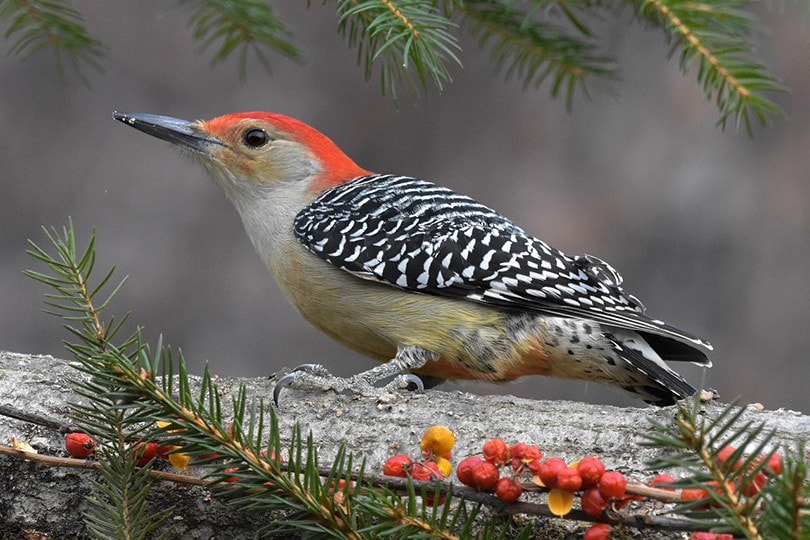
| Size: | 10 inches |
| Weight: | 3 ounces |
The Red-Bellied Woodpecker is a relatively large woodpecker that has a somewhat misleading name when it comes to spotting the bird. The species has a brown body with a black and white back. The top of its head is a distinctive red, but despite being called Red-Bellied, it really only has a small and light red patch on its belly, which isn’t always easily visible.
The Red-Bellied Woodpecker can be seen in the state throughout the year and does not migrate, although it may move to lower elevations during winter.
6. Red-Headed Woodpecker
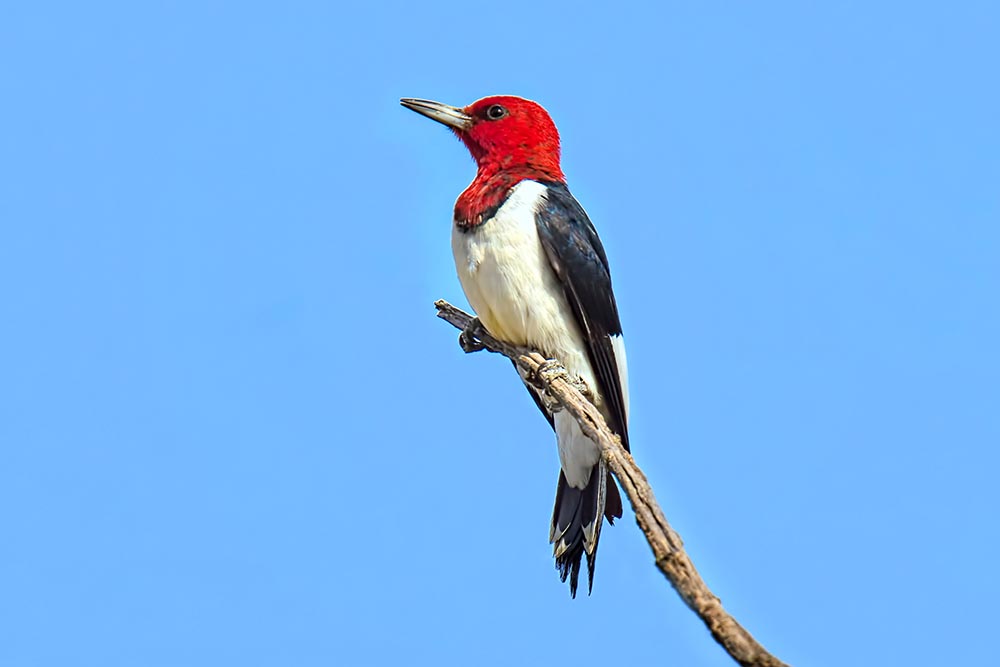
| Size: | 9 inches |
| Weight: | 3 ounces |
The Red-Headed Woodpecker is quite easily found in Connecticut, although identifying them is not easy when the species is young. Until about 1 year of age, the Red-Headed Woodpecker actually has a brown head, and this changes color to the striking red of the adult. It is a medium-sized woodpecker and another that prefers to live in or near deadwood forests.
7. Yellow-Bellied Sapsucker

| Size: | 8 inches |
| Weight: | 1.5 ounces |
The Yellow-Bellied Sapsucker is a medium species with black and white wings, a brown and white body, and a black and white striped head with a red mark on top. The bird also has yellow streaks on its belly, hence its name.
As well as eating the usual array of insects and foliage, the Yellow-Bellied Sapsucker also feeds on tree sap. It lives and drills most tree species but prefers the white birch because its sap has the highest sugar content.
8. Black-Backed Woodpecker
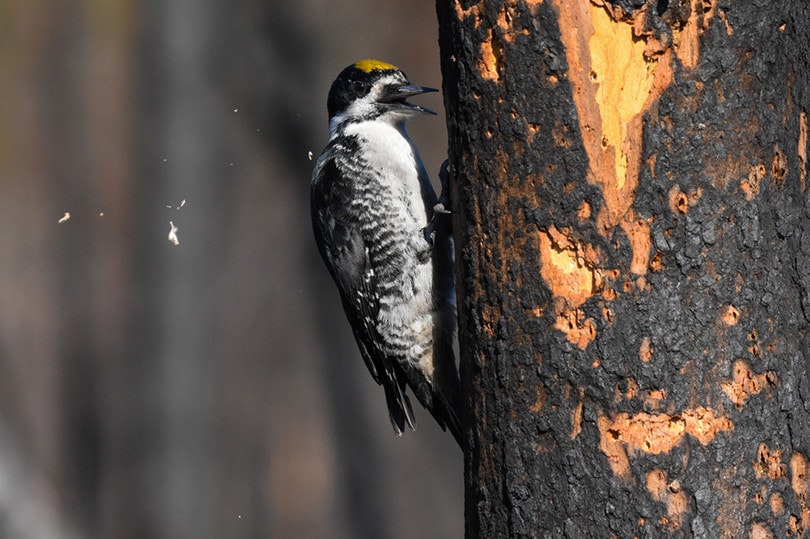
| Size: | 16 inches |
| Weight: | 3 ounces |
The Black-Backed Woodpecker is not really native to Connecticut but does live in coniferous forests surrounding the state and may occasionally fly into the state and be spotted. The bird is predominantly black and white but has a blue tint to some of its back and head feathers with a yellow flash on the forehead. They are most commonly found in areas that have recently been burned.

How to Attract Woodpeckers to Your Yard
Woodpeckers enjoy a varied diet that typically consists of insects and seeds, as well as some fruit. Offer sunflower seeds, slices of orange or apple, and fresh water. Use platform feeders or large hangers and combine these with suet hangers to have the best chance to attract the different species of woodpeckers in Connecticut.
What Is the Largest Woodpecker in Connecticut?
The Pileated Woodpecker can grow to a length of 19 inches and is one of the largest species of woodpecker in the US, as well as being the largest in Connecticut.
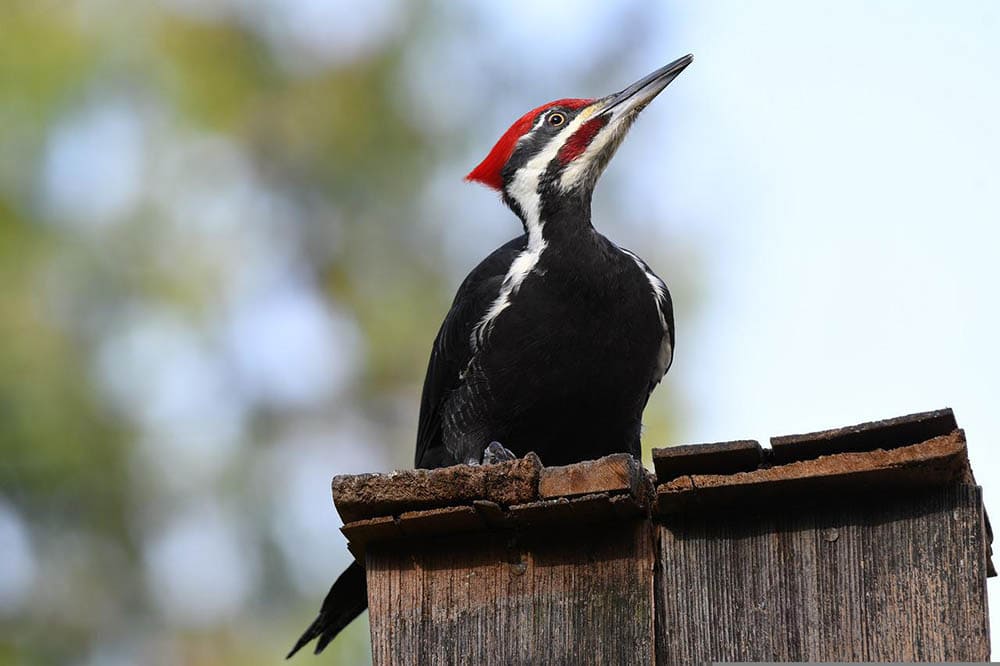
How Do I Identify a Woodpecker?
Woodpeckers, in general, have long and pointed beaks that they can use to drill holes in wood. They also either have a barbed tongue or sticky saliva, which helps extricate insects they find in drilled trees.
When it comes to appearance, different woodpeckers do have different markings, but most tend to be primarily black and white or brown and white. One of the easiest ways to identify a bird as a woodpecker is by drilling into tree trunks, which it does to look for food but also to create a nesting site.

Conclusion
Woodpeckers are a fascinating bird species that are also considered beneficial to the local ecology because they eat insects, and their drilled holes provide nesting sites for other birds and types of animals. There are seven species of woodpecker considered native to Connecticut, and you may also spot the Black-Backed Woodpecker paying a visit to the state. If you are one of the many people looking for ways in which to attract this bird to your garden, offer seeds and water, as well as suet hangers.
You might be interested:
Featured Image Credit: JackBulmer, Pixabay
About the Author Robert Sparks
Robert’s obsession with all things optical started early in life, when his optician father would bring home prototypes for Robert to play with. Nowadays, Robert is dedicated to helping others find the right optics for their needs. His hobbies include astronomy, astrophysics, and model building. Originally from Newark, NJ, he resides in Santa Fe, New Mexico, where the nighttime skies are filled with glittering stars.
Related Articles:
Monocular vs Telescope: Differences Explained (With Pictures)
10 Types of Hummingbirds in Arkansas (With Pictures)
8 Types of Hummingbirds in Nebraska (With Pictures)
5 Types of Hummingbirds in Idaho (With Pictures)
3 Types of Hummingbirds in Mississippi (With Pictures)
8 Types of Hummingbirds in Kansas (With Pictures)
5 Types of Hummingbirds in West Virginia (With Pictures)
5 Types of Hummingbirds in Ohio (With Pictures)
